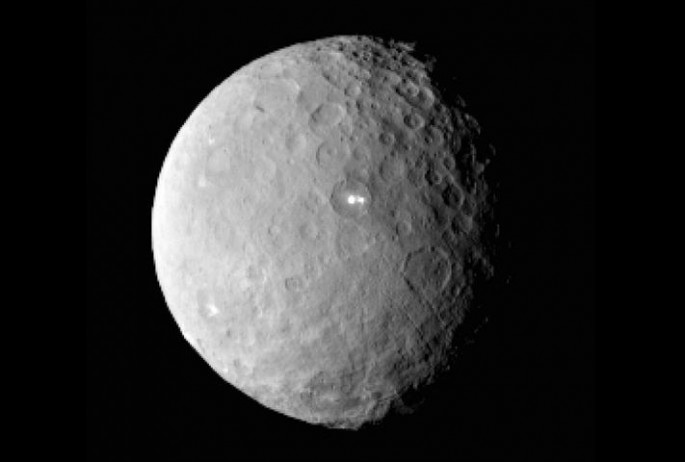NASA has released the clearest images of the strange lights on the dwarf planet Ceres. However, the space agency is not yet close in explaining exactly what they are.
The new image was taken on May 16 at a distance of 4,500 miles (7,200 km). It has a resolution of 2,250 feet (700 m) per pixel, Sci-News reported. It will remain at a distance of 2,700 miles (4,400 km) from the dwarf planet until June 30. Afterward, it will make its way to lower orbits.
Researchers are quite convinced that something in the bottom of a large crater is reflecting the sun's rays, but they are not able to identify exactly what the reflective material is or why they are only in one of the dwarf planet's surface depressions.
"Dawn scientists can now conclude that the intense brightness of these spots is due to the reflection of sunlight by highly reflective material on the surface, possibly ice," said Christopher Russell, principal investigator for the Dawn mission from the University of California, Los Angeles.
Dawn has been using its ion propulsion system to move to its second mapping orbit at Ceres and it is expect to reach it on June 6. Ion propulsion allowed the spacecraft to enter and leave orbit of multiple celestial bodies.
Other previous crafts, like the Voyager program, have used conventional drives which restricted them to only flybys, according to Science Times.
Since launching in 2007, NASA’s Dawn has already visited the giant protoplanet Vesta, which is currently located 104 million miles (168 million km) away from Ceres.
Currently, the space probe is pushing itself to a wider orbit, but subsequent orbits will see the spacecraft move even closer to the dwarf planet's surface that might give a concrete answer the mysterious lights on the dwarf planet.



























